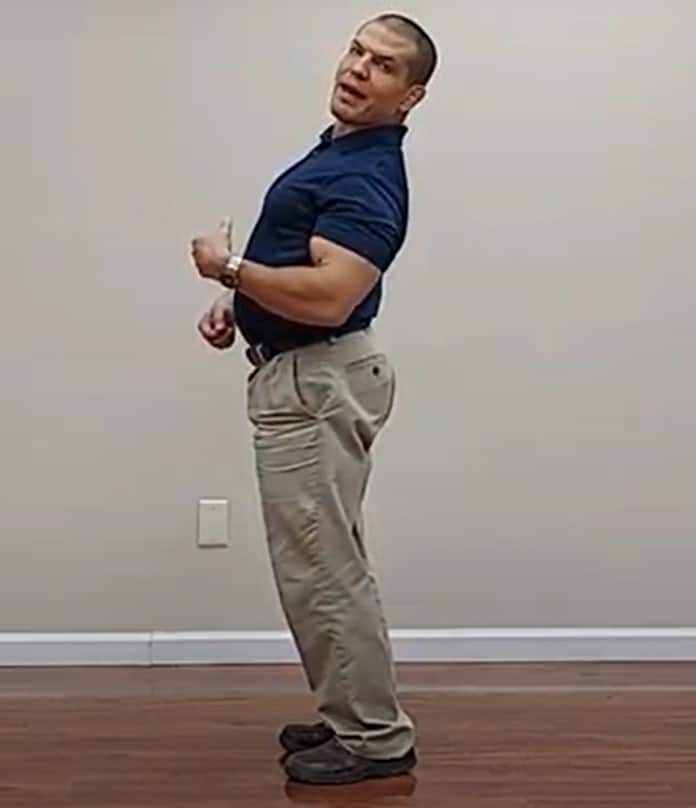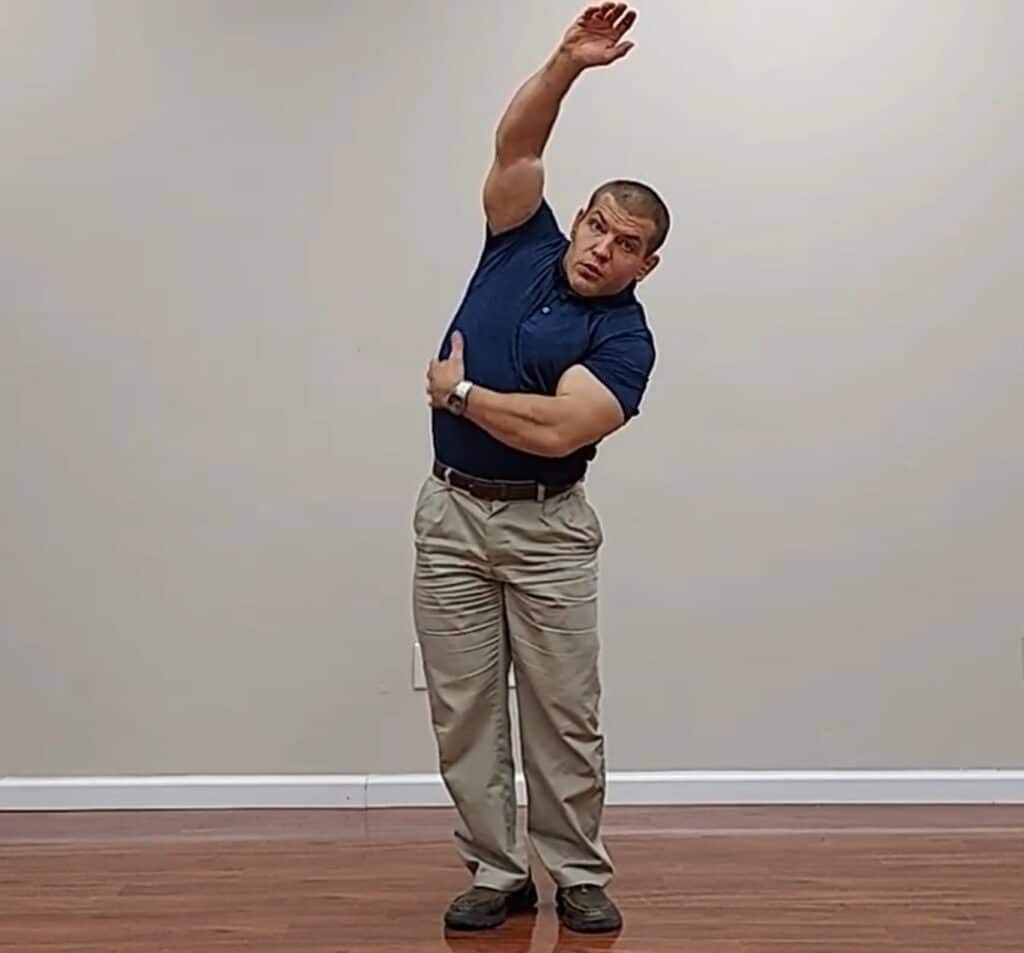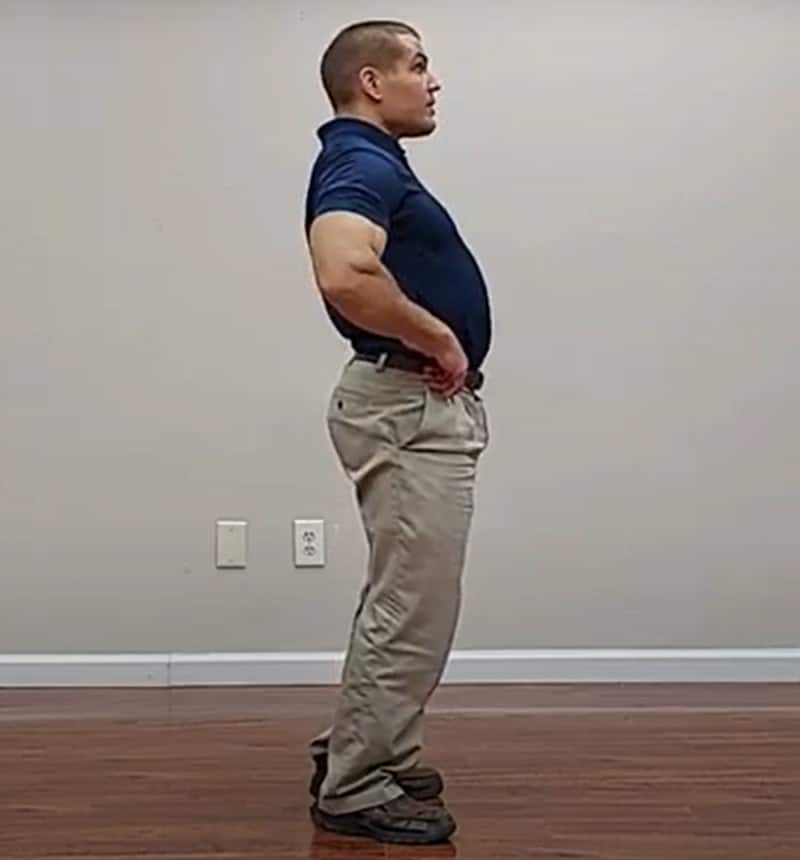What Are The Best Lower Back Pain Stretches?
Watch the video below to learn which lower back pain stretches to do, which ones to avoid, and how to know the right lower back pain stretches for YOUR particular problem.
Which Lower Back Pain Stretches Should I Do?
There's SO much information that that it can be overwhelming! Just search for "lower back pain stretches" on YouTube or Google, and I'm sure you'll see what I mean.
How do you know which lower back pain stretches are good for your?
Equally as important:
How do you know which lower back pain stretches you should avoid?
In this post, you'll learn:
- Which lower back pain stretches you should based on your symptoms
- Which lower back pain stretches to avoid based on your symptoms
- Different variations of stretches for your specific back pain
- What's even more important than stretching when it comes to relieving lower back pain.

The 3 Different Types Of Lower Back Pain Stretches
There are three different types of lower back pain stretches, all of which correspond to the different directions that your back and upper-body can move.
Lower Back Flexion Stretches
First, there are forward bending, or flexion exercises. These exercise are great if you have lower back pain that hurts more when you're standing and walking and feels better when you're sitting down.
Lower Back Extension Stretches
Next, there are backward-bending (extension) stretches, in which you lean your trunk backwards. These are better for young, tall people who tend to have flatter backs, particularly if they've herniated a disc.
These are usually NOT the best kind of stretches for people over the age of 50 years old because the spine starts to lose its tolerance to extension when you lose disc height.
Side-To-Side Lower Back Stretches
Last, there are side-to-side stretches. This can include sidebending or rotation stretches.
These type of stretches are good for people who have assymetric back pain where the pain is worse on one side. They are also good for people with leg-length differences, SI joint dysfunctions, one-sided back spasms, or people who have pain going down one leg.
For some people, these lower back pain stretches are good to do on their own. Other people may have to combine them with either flexion or extension stretches.
Forward Bending Lower Back Pain Stretches
(William's Flexion Exercises)
Forward bending stretches , sometimes called William's Flexion Exercises, are good for people who have back pain when their spine is erect. People who benefit from lumbar flexion exercises often have back pain when standing or back pain when walking.
Often times people who are older or who have lumbar degenerative disc disease also benefit most from William's flexion stretches.
Knees To Chest Floor Exercise
Good exercises for flexion include laying flat on the floor and pulling one, or both of your knees up towards your chest. This helps to stretch, and round-out your back.
Posterior Pelvic Tilts
Lay on your back and pull your belly button toward your spine while tilting your pelvis toward your head. If you are doing this correctly, your lower back shoulder flatten out on the floor.
Child's Pose Stretch
This is by far my favorite overall lower back pain stretch. Child's pose has so many different variations, and the spine is in an unloaded position, which neutralizes the effects of gravity.
If you can't kneel on your knees (even on a bed), doing a seated forward bending chair yoga stretch can help.
On all fours (both your knees and your hands), you can also do the child's pose stretch which is where Either actively round out your back as you pull your buttocks towards your feet on the ground which is a great flexion stretch.
Cat-Cow Stretch
A good combo exercise that does both flexion and extension stretching, is the Cat-Cow stretch.
This is again on all fours, where you’re actively curving your back downwards, like a cow’s back. Then, the second part of the exercise involves pulling your back upwards, and rounding it out like an aggravated cat.
Need Help For Lower Back Pain?
Tap the button below to request a Back Pain Discovery Visit with one of our specialists to discover how we can help.
Backward-Bending Lower Back Pain Stretches
(McKenzie Exercises)
Popularized by Robin McKensie, backward bending, or extension stretches have also become known as McKensie Extension Exercises.
Extension stretches are typically helpful for people who have pain when bending their upper-body forwards or rounding out their lower back. Many people with these problems typically are younger, sit down for longer periods of time, have a herniated disc, or are taller.
All of these people are more likely to have stress on their spines from leaning forward too often, causing pain when leaning forward too far. If this sounds like you, then you'd likely benefit from extension type exercises, or stretches.
Standing Spine Extension Exercise
The first exercise that you can do for extending your back is just a simple standing back extension. This involves standing up like normal, and pulling up your trunk/upper-body as far back as it can go comfortably. However, don’t use your back’s full range of motion, as this could be dangerous and over-compressive on your spine.
However, our general rule of thumb is that if the stretch helps you to feel better, then extension exercises and stretches are probably for you, just don't overdo them.
Other extension exercises are usually performed on your belly, lying on the floor.
Prone On Elbows Lower Back Extension Stretch
Lay on the floor propped up on your elbows.
This is an easy extension exercise and a good way to start the McKenzie extension exercise protocol. Progress to the prone press-up shown below.
Prone Press-up McKenzie Extension Exercises
This exercise takes your spine into further extension. You still want to make sure that you have a smooth curve in your lower back and that you're not hinging from L4-L5 or L5-S1, as these are common areas where people develop lower back problems from hypermobility (excessive flexibility). See the video for a more thorough description.
Side-To-Side Lower Back Pain Stretches
As a reminder, these exercises and stretches are for leaning over to the left or right side of your body, and stretching out or twisting your spine in that direction.
These are great if you have one leg that's longer than the other, an SI joint that's rotated, one of your hips appears higher than the other, or you have scoliosis.
Stretching toward the convex side of a scoliosis curve can help correct the muscle imbalances caused by scoliosis.
Standing Side-bending Stretch
The first side to side stretch you can do is one where you stand straight up, and try to pull one arm towards the ceiling as high as possible. This movement should be pulling your shoulder away from your pelvis.
Kneeling Hip Flexor Side Stretch
You can also combine this movement with a hip flexor stretch. This will help stretch the psoas portion of your hip flexors, as well as your spine in the side-to-side plane. The version shown in the picture above is for back pain on the lower right side.
Floor Hip Rotation Stretch
Then, there are the rotational type of side to side exercises. The most common example of this is laying down hip rotation exercise. This exercise rotates your hips when you lie down on the floor with your knees bent upwards, and you rotate your hips back and forth, towards the floor.
I don’t recommend over-rotating your hips with this movement, as the joints in your spine only have a few degrees of movement.
Click here to learn why twisting is bad for your lower back
Just Doing Lower Back Stretches Won't Cure Your Back Pain
So there you have it.... 11 lower back pain stretches, plus when to use them.
So why am I, a physical therapist, just giving this information away for free?
Well, there's a lot more to physical therapy than just doing stretches, and frankly, if all that you're getting from your physical therapy is a list of exercises, then your physical therapist is probably doing you a disservice.
Here's why:
While the stretches in this post are helpful,
just doing lower back stretches won't cure your back pain.
In order to get rid of your back pain for good, you need to find and address the root cause of the pain, so that it doesn't keep coming back in the future.
Want To Discover The Root Cause Of Your Lower Back Pain?
Request a Back Pain Discovery Visit with one of our specialists to discover how we can help.















